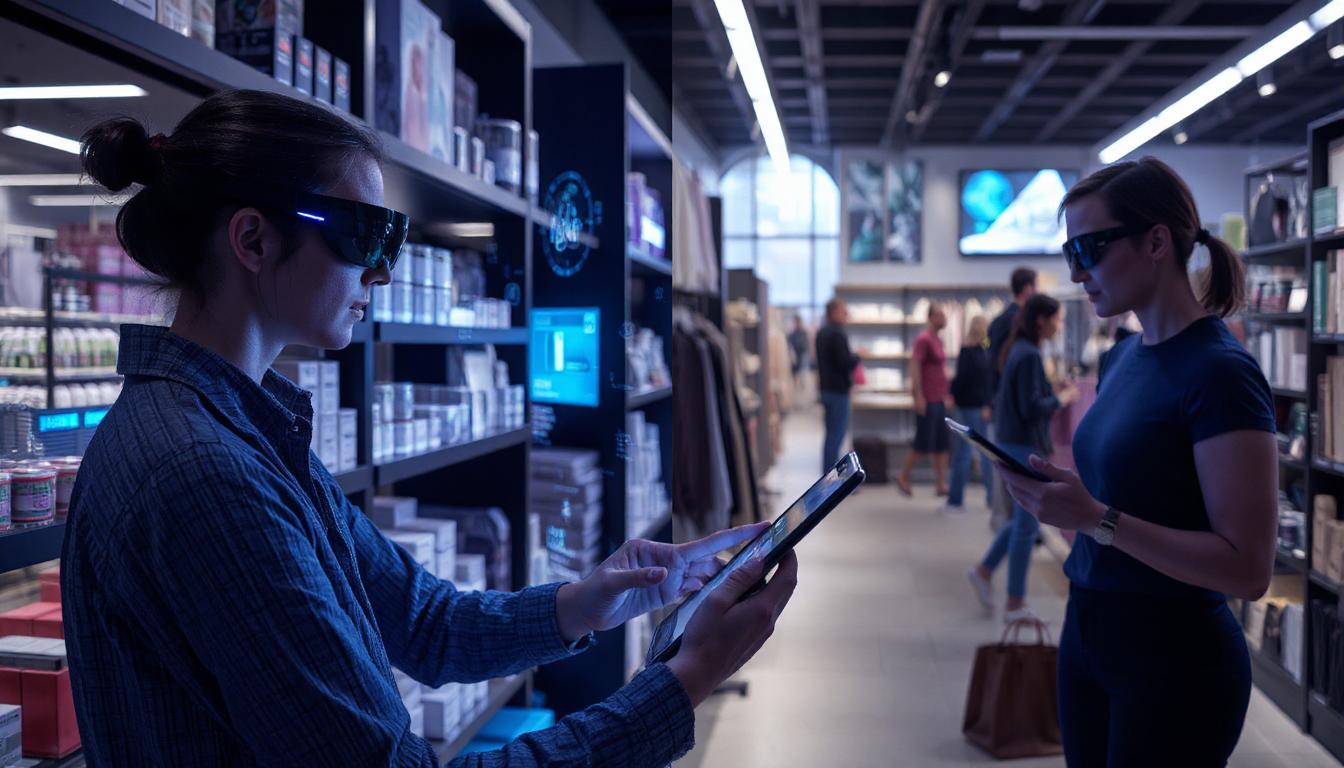In today's hyper-competitive business landscape, delivering exceptional customer experiences isn't just advantageous—it's essential for survival. At the forefront of this revolution stands the powerful convergence of Artificial Intelligence (AI) and Augmented Reality (AR), technologies that separately showed promise but together are redefining what's possible in customer engagement.
The Perfect Technological Storm
The global AR market is projected to reach $97.76 billion by 2028, according to Grand View Research, while the AI market is expected to hit $407 billion by 2027. This explosive growth reflects how these technologies are moving from experimental to essential, particularly in customer-facing applications.
When integrated thoughtfully, AI handles the heavy cognitive lifting—analyzing data, recognizing patterns, and making predictions—while AR creates intuitive visual interfaces that blend digital information seamlessly with the physical world. The result? Customer experiences that feel simultaneously magical and effortless.
Real-World Applications Transforming Industries Today
Retail: Try Before You Buy Gets an Intelligence Upgrade
The retail sector has embraced this technological marriage with remarkable creativity. Sephora's Virtual Artist combines AR makeup try-on capabilities with AI-powered product recommendations based on skin tone analysis and purchase history. According to Harvard Business Review, retailers implementing such AR experiences have seen conversion rates increase by up to 200%.
Similarly, IKEA Place, one of the pioneering AR retail applications, now incorporates machine learning to not just place furniture in your space but to actively suggest complementary items based on your existing décor and spatial constraints.
Technical Support: Visual Assistance with AI Guidance
Companies like CareAR (a Xerox company) are reinventing technical support by combining AR visual assistance with AI troubleshooting. Technicians can see exactly what customers see while AI systems analyze the visual data in real-time, identifying parts, suggesting solutions, and even predicting potential failures before they occur.
Research from Gartner indicates that organizations implementing visual support technologies reduce field service costs by up to 20% while significantly improving first-time fix rates.
Automotive: Personalizing the Purchase Journey
The automotive industry has embraced AI-powered AR to transform both showrooms and service centers. BMW's AR visualizer allows potential buyers to configure and visualize vehicles in their actual environment, while AI systems analyze customer preferences to suggest personalized features and options.
On the service side, Mercedes-Benz has implemented its Virtual Remote Support system, which enables technicians to receive AR-guided support from experts remotely, with AI helping to identify parts and procedures.
Implementation Challenges and Solutions
Despite the promise, integrating AI and AR for customer experience isn't without challenges. According to McKinsey's research on digital transformation, 70% of digital transformation projects fail to meet their objectives, often due to integration difficulties.
Successful implementation requires:
- Robust data infrastructure - AI needs high-quality data to provide valuable insights that power AR experiences. IBM's data fabric approach offers one solution to this challenge.
- Cross-platform compatibility - Customers expect consistent experiences across devices. Unity's AR Foundation provides developers with tools to build once and deploy across multiple AR platforms.
- Privacy-centered design - As these technologies collect more data, privacy concerns multiply. The National Institute of Standards and Technology (NIST) privacy framework offers valuable guidance for responsible implementation.
Measuring Impact: The ROI of Immersive Intelligence
Implementation costs for combined AI and AR systems can be substantial, but so are the returns. Research from Deloitte found that companies implementing AR solutions reported average ROI improvements of 40-60% for training applications alone.
Key metrics to track when implementing these technologies include:
- Conversion rate improvements
- Customer satisfaction scores
- Average resolution time for support issues
- Training completion rates and effectiveness
- Return rates for products purchased using AR visualization
The Ethical Dimension
As these technologies become more embedded in customer experiences, ethical considerations become increasingly important. The IEEE Global Initiative on Ethics of Autonomous and Intelligent Systems provides frameworks for ensuring AI-AR implementations respect user agency and privacy.
Transparency is particularly crucial—customers should understand when AI is influencing their AR experiences and have options to control their level of engagement.
What's Next: The Near Horizon
Looking ahead, several developments promise to accelerate the AI-AR revolution in customer experience:
- 5G proliferation - According to Ericsson's Mobility Report, 5G coverage will reach 60% of the global population by 2026, enabling more responsive and complex AR experiences powered by cloud-based AI.
- Lightweight AR glasses - Companies like Snap and Nreal are making consumer AR glasses increasingly practical for everyday use, expanding the potential touchpoints for immersive customer experiences.
- Edge AI - As processing moves closer to devices, AR experiences will become more responsive. Google's Edge TPU and similar technologies are making sophisticated on-device AI processing increasingly viable.
Conclusion: The Competitive Advantage of Immersive Intelligence
The integration of AI and AR for customer experience isn't just innovative—it's becoming a competitive necessity. Organizations that successfully implement these technologies create memorable, frictionless customer journeys that build loyalty and drive business results.
As we move forward, the distinction between digital and physical customer experiences will continue to blur. Businesses that embrace this reality—leveraging AI's analytical power within AR's immersive framework—will define the next generation of customer engagement.
The future of customer experience isn't just digital or physical—it's intelligently immersive. And that future is already here.
What AR and AI customer experience innovations have you encountered? Share your experiences in the comments below.

